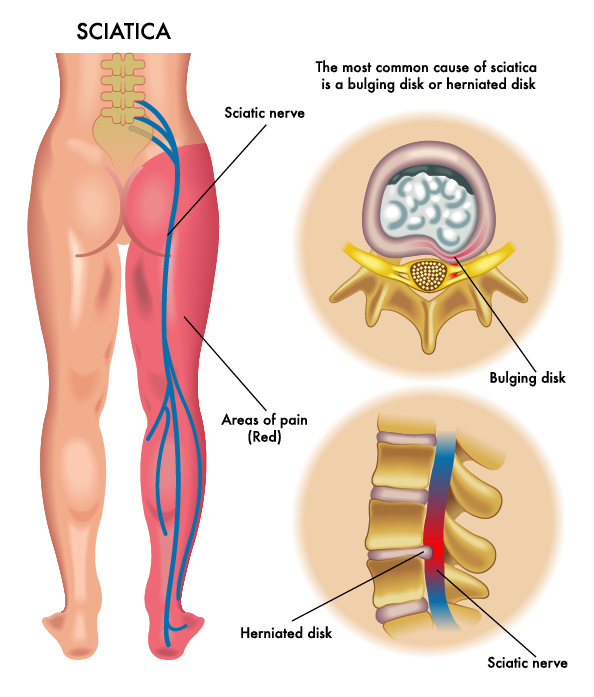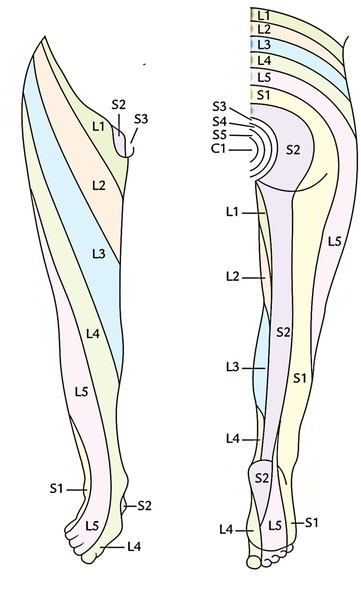Common Conditions
Sciatica
Sciatica refers to pain that radiates along the path of the sciatic nerve, which extends from the lower back, through the hips and buttocks, and down each leg. It should be regarded as a symptom of an underlying issue, such as a herniated disc or spinal stenosis, that compresses or irritates the sciatic nerve. Sciatica typically affects one side of the body and can range from mild discomfort to severe, debilitating pain.


What causes sciatica?
Sciatica is typically caused by compression or irritation of the sciatic nerve, which can result from:
- Herniated or bulging discs: When a spinal disc presses on the sciatic nerve, it can cause pain and inflammation.
- Spinal stenosis: Narrowing of the spinal canal can compress the sciatic nerve roots.
- Degenerative facet joint disease: Arthritis of the facet joints causes bony enlargement of the joints which can contribute to narrowing the foramen through which the nerves leave the spinal column.
- Spondylolisthesis: When one vertebra slips forward over another, it can pinch the sciatic nerve.
- Non-lumbar causes: Tightness in the piriformis muscle or hamstring tendon inflammation can irritate the sciatic nerve outside the spine.
Common symptoms of sciatica
Sciatica symptoms typically include:
- Radiating pain: A sharp, burning, or shooting pain that travels from the lower back through the buttock and down the leg.
- Numbness or tingling: Sensations may occur in the affected leg or foot.
- Weakness: Some individuals may also experience muscle weakness in the leg or foot.
- Pain on one side: Sciatica usually affects only one side of the body.
Diagnosis of sciatica
Diagnosing sciatica begins with a detailed medical history and physical examination. Dr Young will ask about the nature and exact location of your pain, as well as any numbness, tingling, or weakness. Dr Young may perform specific tests, such as the straight leg raise, to see if certain movements reproduce your symptoms.
Imaging tests are often used to confirm the underlying cause of nerve compression. These may include:
- MRI scans to detect disc herniation, spinal stenosis, or other nerve impingement.
- X-rays to evaluate spinal alignment or signs of arthritis.
- CT scans or nerve conduction studies may be used in some cases to further assess nerve function.
A combination of clinical findings and imaging helps confirm the diagnosis and guide treatment.
Management of sciatica
Treatment for sciatica focuses on relieving nerve compression, reducing pain, and addressing the underlying cause. Options include:
- Self-care measures: Resting and avoiding activities that worsen symptoms.
- Medications:
— Over-the-counter pain relievers such as ibuprofen or paracetamol.
— Muscle relaxants or prescription medications for more severe cases. - Physical therapy:
— Exercises to improve flexibility, strengthen the lower back and core muscles, and relieve nerve pressure.
— Stretching routines for the hamstrings, hips, and lower back. - Injections: Corticosteroid injections near the sciatic nerve roots can provide temporary relief from inflammation and may help confirm the diagnosis.
- Surgical options: In cases where conservative treatments fail, surgery may be necessary to remove the source of nerve compression, such as a herniated disc.


